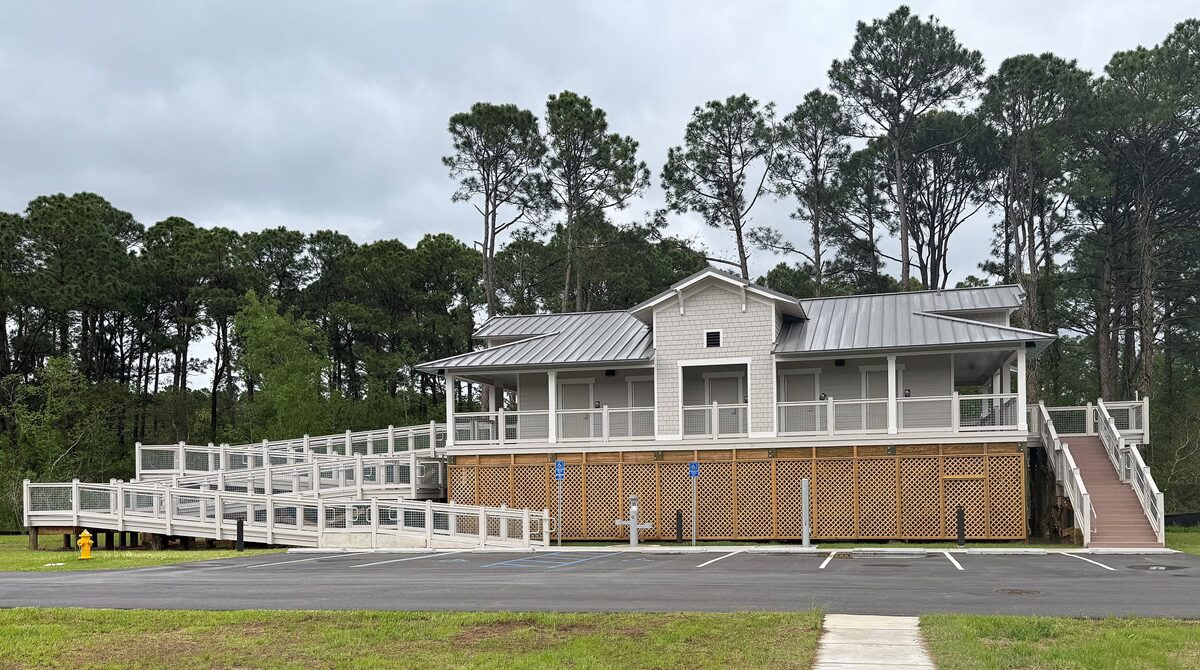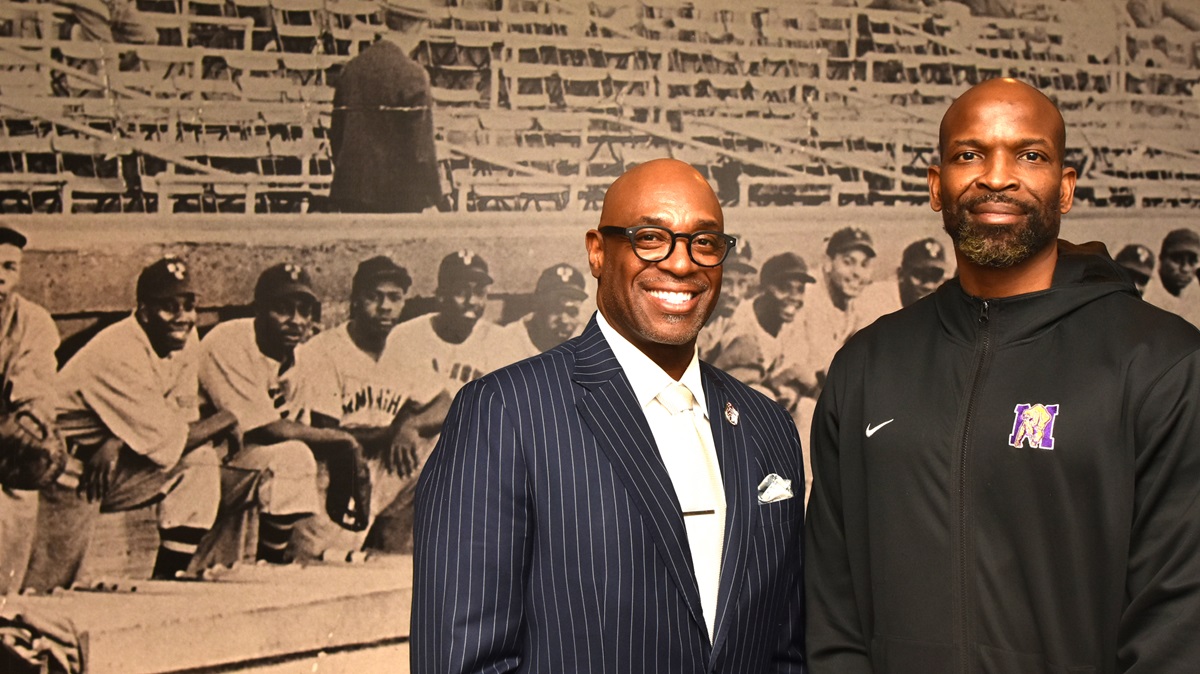Alabama Press Association celebrates 150 years

The Alabama Press Association is celebrating 150 years. (contributed)
It’s been said that newspapers are the first draft of history. This month, those responsible for those first drafts in Alabama will celebrate 150 years of working together to promote the craft of local journalism and the public’s right to know about what’s going on in the halls of local government.
It was 1871 during the height of Reconstruction – with Alabama still reeling from a devastating Civil War – that the editor of the Montgomery Advertiser, William Wallace Screws, called together eight Alabama newspaper editors and publishers to propose convening “the members of the Press of Alabama.” That discussion signaled the start of what became the Alabama Press Association (APA).

An Alabama State Journal from 1871 announces plans for the formation of an Alabama Press Association. (contributed)
“We do believe we are the oldest trade association in the state, or certainly one of the oldest,” said Felicia Mason, APA executive director.
A century and a half later, the APA boasts some 130 active and associate members, serving communities in every corner of the state and the places between. The organization includes newspapers that sell and deliver newspapers (or their digital counterparts) to paid subscribers, as well as publications that are distributed free but have active editorial teams that report news and information to their readers.
Despite the economic challenges some newspapers have faced during the digital age, and through the ongoing pandemic, APA membership has held steady for decades. Indeed, many community newspapers across Alabama continue to be family-owned and are vital, must-read sources of information in the towns they serve.
“Our newspapers are doing what they’ve always done,” Mason said. From covering city council meetings and high school sports to following area business developments and recognizing community leaders – it’s “the kind of stories you want to clip and put on the refrigerator,” she said.
“People do expect you to cover everything,” said Ann Smith. For nearly 50 years, Smith and her husband, Joel, and then their son Jack, were the family that put out The Eufaula Tribune. In 2004, Joel and Ann Smith received APA’s Lifetime Achievement Award. The family sold the paper in 2006. Joel Smith died in 2009.
Ann Smith officially joined the family enterprise in the 1980s when it faced a common dilemma for a community newspaper. “They were short of help,” she recalled, chuckling. At first she wrote a social column, then became senior writer and later associate editor and publisher.
“I covered police news, the zoning board, city council – all the things that you do,” Smith said.

The Mobile Register printing facility in the 1930s. (The Encyclopedia of Alabama)
Small weekly and semiweekly newspapers always outnumbered dailies in Alabama, and that remains the case today, Mason said. Like many other industries, technology has transformed how newspapers are produced. But the mission – to keep local readers informed – hasn’t changed.
KA Turner knows a thing or two about Alabama newspapers, large and small. She worked at a small community newspaper in Montevallo during college, helping process photographs when that still entailed dark rooms, chemicals and paper. She is now senior editor for print at Alabama Media Group, the organization behind al.com, The Birmingham News, The Huntsville Times, Press-Register in Mobile, as well as the Mississippi Press and other platforms. In all, she has worked at nine newspapers in Alabama, from Alexander City to Selma and multiple points in between.
“When you think about these companies, and they are companies, many of them have been fixtures in their communities for decades,” said Turner, who also serves as APA board president. “They not only provide a trusted source of information in their communities; they are the way that other business communicate in a community with their customers.” She noted as community-based businesses, newspapers are also local employers and taxpayers.
“They are active parts of their communities, as well as providing an important community service, and that’s pretty amazing.”
Another longtime mission of newspapers and the APA is advocating for “government in the sunshine” – ensuring government meetings stay open and government records remain accessible and affordable for the public.
For decades, APA has maintained a presence at the Alabama State House with the goal of securing and strengthening laws protecting reporters’ and the people’s right to observe government meetings and obtain information from public agencies.
In 2005, APA successfully lobbied the Legislature to approve the Alabama Open Meetings Act, protecting public access to government-related gatherings, be it a meeting of the local town council or a major state board. APA continues to lobby to improve the state’s Open Records Act, to make government records easier to obtain. To date, lawmakers have yet to buy in on APA’s full slate of recommendations on the latter.

At the 2019 APA Media Summit, from left, Ben Shurett, Regina Wright, Bill Keller and Tom Wright. (contributed)
“It’s difficult work, to protect the public’s interest,” said Bill Keller, who was APA executive director over two stints in the 1980s and 1990s.
On the flip side, elected officials often seek APA’s and its members’ attention in hopes of obtaining newspaper endorsements. During election years, it’s not uncommon for a parade of candidates to make their way to APA’s annual convention to press the flesh. It is not a gathering for squeamish politicians, who may face a barrage of tough, probing questions from editors and publishers. Gov. Kay Ivey is scheduled to attend, later this month, the APA annual summer convention that will celebrate the organization’s sesquicentennial.
“Editorials have always been a tool to influence the community and help move it forward,” Mason said. And while some larger papers in the state have moved away from editorials endorsing candidates, many smaller papers continue the tradition.
Keller said one of the most remarkable things about Alabama newspapers, and the association that represents them, is their ability to adapt and stay a progressive force for the state.
In the early days of the APA, the association and its member newspapers played an important role in efforts to rewrite the 1875 state constitution, pushing for public funding of schools, recruitment of out-of-state industry and making government meetings public. More than a century later, newspapers became some of the earliest and strongest advocates for making changes and improvements to Alabama’s current constitution, drafted in 1901, including removing racist language from the document. Last year, Alabama voters agreed to remove the language and other archaic sections that endorse poll taxes, suffrage for men only and segregated schools – positions that have long been nullified by the courts.
Alabama newspapers were among the early and important advocates for creating a statewide chamber of commerce, back in the 1930s.
In 1951, forward-thinking APA board members established the Alabama Newspaper Advertising Service (ANAS), a separate business affiliate that today allows clients to easily place ads, including classifieds, in as many as 124 Alabama newspapers, including on their digital platforms. Through the service, advertisers can reach as many as 700,000 Alabama households and more than 1 million readers. Seventy years after its creation, ANAS is considered one of the strongest press association ad-placement services in the country, with its revenues supporting the APA’s and local newspapers’ bottom lines.



Of course, historically, Alabama newspapers have often reflected less-progressive elements of the culture, defending institutions and practices now considered abhorrent. Many Alabama newspapers in 1901 praised the then-new state constitution and its codification of Jim Crow rules and the disenfranchisement of Blacks. Many Alabama newspapers also gave short shrift to the lynching of Blacks during the darkest days of Jim Crow, and in the 1950s and ‘60s were cool or even dismissive of nonviolent efforts to dismantle segregation and enact federal civil rights legislation.
On the other hand, two Alabama newspaper editors, the Advertiser’s Grover Hall in 1928, and The Tuscaloosa News’ Buford Boone in 1957, were awarded the Pulitzer Prize – American journalism’s highest honor – for courageous editorials challenging the state’s racist and violent status quo. Hall’s editorials blasted the violence of the Ku Klux Klan and religious intolerance. He later argued for release from prison of the Scottsboro Boys, a group of Black teenagers accused in 1931 of raping two white women, a case considered one of the great miscarriages of justice of the 20th century. Boone’s winning editorial, from February 1956, supported the right of Autherine Lucy, a Black woman, to attend the University of Alabama – at the very moment that white, pro-segregation mobs roamed the campus in protest.
Screws, considered the founder of the APA, was still the editor of the Montgomery Advertiser in 1901 when the paper heartily endorsed the passage of the 1901 Constitution on its front page. More than a century later, in 2018, the Advertiser published an editorial apologizing for its long record of “shameful” coverage of mob violence against Blacks, from Reconstruction to the 1950s.
“We were wrong,” the Advertiser editorial board wrote in a move that brought national headlines. “We take responsibility for our proliferation of a false narrative regarding the treatment of African-Americans in those disgraceful days,” the editorial said. “We propagated a worldview rooted in racism and the sickening myth of racial superiority.”
The editorial concluded: “We must never be as wrong as this again.”

Mike Williamson, pressman, at The Clarke County Democrat. (contributed)
That newspapers in Alabama have historically reflected both the good and bad in Alabama is not surprising, Smith said, “because we are made up of people.”
“Newspapers do mirror the times, but some are going to be more progressive and some more conservative,” she said, based on a newspaper’s leadership and the cultural nuances in a particular community. During turbulent times, papers in the state have often expressed divergent views, with some more supportive of the status quo and others taking more progressive stands.
Through it all, and even with publishers from different publications sometimes at odds about policy and politics, the APA has been a vital forum for newspaper leaders to exchange views, share best practices and “learn from each other,” Smith said.
She noted how APA provides legal support when newspapers are forced to challenge actions by government or politicians that question or defy the constitutional guarantee of freedom of the press to keep the public informed. She noted that a small community newspaper may not have the expertise or financial wherewithal to carry on a legal battle in favor of open government or open meetings. But the APA, with the collective resources and support of member newspapers, can be a formidable force to protect the constitutional rights of the people they serve.
“One reason the APA has survived and served for 150 years is because the members appreciate its value,” Smith said. “It has served a very worthwhile purpose – for the press in Alabama, and for its dedication to the freedom of the press and the role of the press in a democratic society.”
She said APA’s periodic meetings are critical forums for editors and publishers from across the state to discuss and tackle mutual challenges. She noted that the APA’s annual summer convention is akin to a reunion, where small newspaper owners and their families meet each year – not only to share ideas, but to enjoy personal fellowship and camaraderie. She said many children of small newspaper owners in Alabama have literally “grown up together” at APA summer meetings, and eagerly await the next annual gathering.

The staff of The Fairhope Courier in 1956. (contributed)
Turner said she has maintained a connection with APA throughout her extensive career because “you can’t have too many mentors and peers.”
“You learn a lot” during APA member gatherings, Turner said. “Offering that kind of experience and resource for people is an important part of what the press association has always done.”
Smith said, “The APA has not only been a great force for newspapers, and for open meetings, but a great resource for publishers. It’s like a big, extended family.”
Mason, who has been a member of the APA staff since 1987, said the comparison to family is an apt one.
“We’ve had our disagreements, but we come together – much like a family. But our goal, the goal of our members, has always been the same: to make our communities, our state, a better place to live and work.”
One longtime goal of the APA is to help support journalism education and nurture the next generation of Alabama journalists. In 1968 the APA created a nonprofit foundation to support journalism education through grants to universities, scholarships and internships. More than a half-century later, the APA Journalism Foundation continues to direct resources toward journalism education in the state, including expanding opportunities for minority students.
Meanwhile, the work of keeping people informed by reporting about the local community – through Alabama newspapers – continues.
In a 2019 statewide survey commissioned by APA and conducted by Pulse Research, respondents rated newspapers as the No. 1 source of local news and information in Alabama.
“With the monumental changes the journalism industry faces, the APA plays a vital role for community news to survive and thrive, and for newsrooms to continue to be the most trusted sources of information for the public,” Smith said.
“I am impressed every day with the resilience of people who run media companies,” Turner said. “They are valuable members of their community. But in doing what they do, every day, they also give communities a chance to be better.
“The newspapers don’t really belong to us. They belong to the community. It’s a higher calling,” Turner said.
“Times have changed … but publishing a newspaper today involves just about the same pains and labors as it did 60 years ago.” So said James Berney Stanley, APA president from 1882 to 1886, during a 1929 speech at Alabama Polytechnic Institute, now Auburn University.
“It is not a game, not a business. It is a profession and an honorable one,” said Stanley, who in 1865 founded The Greenville Advocate, a newspaper – like so many in the state founded decades ago, or even longer – that continues to report, publish and inform readers to this day.















